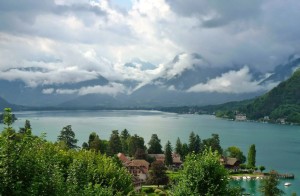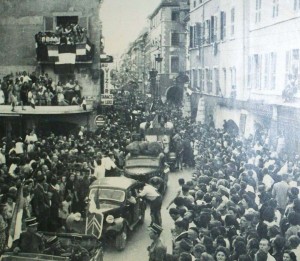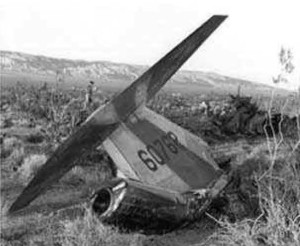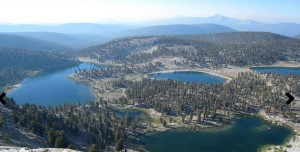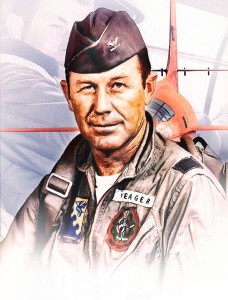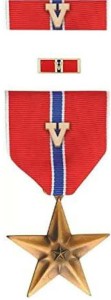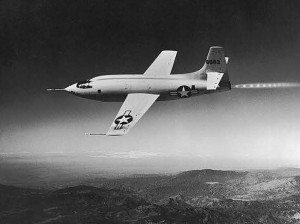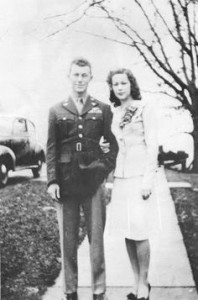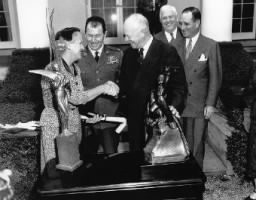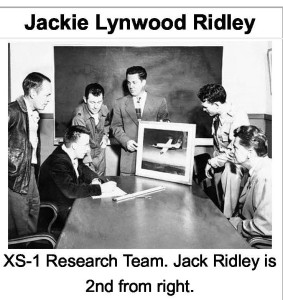
Jack Ridley , Chuck Yeager et al
Jack Ridley sat at the corner of the conference table scribbling little notes and equations. He said, “Well, maybe Chuck can fly without using the elevator. Maybe he can get by using only the horizontal stabilizer.” The stabilizer was the winglike structure on the tail that stabilized pitch control. Bell’s engineers had purposely built into them an extra control authority because they had anticipated elevator ineffectiveness caused by shock waves. The extra authority was a trim switch in the cockpit that would allow a small air motor to pivot the stabilizer up or down, creating a moving tail that could act as an auxiliary elevator by lowering or raising the airplane’s nose. We were leery about trying it while flying at high speeds; instead, we set the trim on the ground and left it alone.
Jack thought we should spend a day ground testing the hell out of that system, learn everything there was to know about it, then flight test it. No one disagreed. There was no other alternative except to call the whole thing quits, but Jack got a lot of “what if” questions that spelled out all the risks.
What if the motor got stuck in a trim up or trim down position?
Answer: Yeager would have a problem.
What if the turbulent airflow at high-speed Mach overwhelmed the motor and kept the tail from pivoting?
Answer: Yeager would be no worse off than he was during the previous mission.
Yeah, but what if that turbulent air ripped off that damned tail as it was pivoting?
Answer: Yeager better have paid-up insurance.
We were dealing with the UGhknown.
Before returning to Wright, Col Boyd approved our ground tests. We were to report the results to him, and then he’d decide whether to proceed with a flight test.
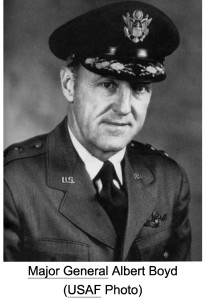
General Al Boyd
Then the old man took me aside. “Listen, “ he said. “I don’t want you to be railroaded into this deal by Ridley or anyone else. “If you don’t feel comfortable with the risks, I want you to tell me so. I’ll respect your decision. Please don’t play the hero, Chuck. It makes no sense getting you hurt or killed.”
I told him, “Col Boyd, it’s my ass on the line. I want us to succeed but I’m not going to get splattered doing it.”
So, Ridley and I ground tested that stabilizer system every which way but loose. It worked fine and provided just enough control (about a quarter of a degree change in the angle of incidence) so that we both felt I could get by without using the airplane’s elevator.
“It may not be much,” Ridley said, “and it may feel ragged to you up there, but it will keep you flying.”
I agreed. But would the system work at high Mach speed? Only one way to find out.
Col Boyd gave us the go ahead.
No X-1 flight was ever routing. But when I was dropped to repeat the same flight profiled that had lost my elevator effectiveness, I admit to being unusually grim. I flew as alert and precisely as I knew how. If the damned Ughknown swallowed me up, there wasn’t much I could do about it, but I concentrated on that trim switch.
At the slightest indication that something wasn’t right, I would break the record for backing off.
Pushing the switch forward opened a solenoid that allowed high-pressure nitrogen gas through the top motor to the stabilizer, changing its angle of attack and stabilizing its upward pitch. If I pulled back, that would start the bottom motor, turning it in the opposite direction. I could just keep it and supposedly make pitch changes. I let the airplane accelerate up to .85 Mach before testing the trim switch. I pulled back on the switch moving the leading edge of the stabilizer down one degree and her nose rose. I retrimmed it back to where it was, and we leveled out. I climbed and accelerated up to .9 Mach and made the same change, achieving the same result. I retrimmed it and let it go out to .94 Mach where I had lost my elevator effectiveness, made the same trim change, again raising the nose, just as I had done at the lower Mach numbers.
Ridley was right: the stabilizer gave me just enough pitch control to keep me safe. I felt we could probably make it through without the elevator.
I had her out to .96 at 43,000 feet and was about to turn off the engine and begin jettisoning the remaining fuel, when the windshield began to frost.
Because of the intense cabin cold fogging was a continual problem, but I was usually able to wipe it away. This time, though, a solid layer of frost quickly formed. I even took off my gloves and used my fingernails, which only gave me frostbite. That windshield was lousy anyway, configured to the bullet-shaped fuselage and affording limited visibility. It was hard to see out during landings, but I had never expected to fly the X-1 on instruments.
I radioed Dick Frost, flying low chase, and told him the problem.
“Okay, part,” he said,. “I’ll talk you in. You must’ve done a lot of sweating in that cockpit to ice the damned windshield.”
I told him, “Not as much as I’m gonna do having you talk me in. You better talk good, Frost.”
He laughed.
The X-1 wasn’t the Space Shuttle. There were no on-board computers to line you up and bring you down. The pilot was the computer. Under normal flight conditions, I’d descend to 5000 feet above the lakebed and fly over the point where I wanted to touch down, then turn and line up downwind, lowering my landing gear at around 250 mph.
The X-1 stalled around 190 mph, so I held my glide speed in around 220 and touched down at around 190.
The ship rolled out about 3 miles if I didn’t apply the brakes. Roger’s Dry Lake gave me an 8-mile runway, but that didn’t make the landing untricky. Coming in nose-high, you couldn’t see the ground at all. You had to feel for it. I was sensitive to ground effect and felt the differences as we lowered down. There was also that depth perception problem, and a lot of pilots bent airplanes porpoising in, or flaring high then cracking off their landing gears. My advantage was that I had landed on these lakebeds hundreds of times. Even so, the X-1 was not an easy landing airplane.
At the point of touchdown, you had to discipline yourself to do nothing but allow the ship to settle in by itself. Otherwise, you’d slam it on its weak landing gear.
So, landing blind was not something you’d ever want to be forced to do. I had survived the Ughknown only to be kicked in the butt by the Unexpected. But that was a test pilot’s life, one damned thing after another. Frost was a superb pilot, who knew the X-1’s systems and characteristics even better than I did. I had plenty of experience flying on instruments and in a hairy deal like this, experience really counted. Between the two of us, we made it look deceptively easy, although we both knew that it wasn’t exactly a routine procedure.
Frost told me to turn left ten degrees, and I followed by using my magnetic compass, monitoring my rate of turn by the needle and ball. I watched the airspeed and rate of descent and knew how fast I was coming down from that and the feel of the ground effect. I followed his directions moving left or right to line up on the lakebed, which was also five miles wide, allowing him to fly right on my wing and touch down with me.
He greased me right in, but my body seat added another layer of frost to the windshield. “Pard,” Dick teased, ‘that’s the only time you haven’t bounced her down. Better let me hold your hand from now on.”
Before my next flight, Jack Russell, my crew chief, applied a coating of Drene Shampoo to the windshield. For some unknown reason. It worked as an effective anti-frost device, and we continued using it even after the government purchased a special chemical that cost eighteen bucks a bottle.
Despite the frosted windshield, I now had renewed confidence in the X-1. We had licked the elevator problem, and Ridley and I phoned Col Boyd and told him we thought we could safely continue the flights.
He told us to press on. This was on Thursday afternoon.
The next scheduled flight would be on Tuesday. So, we sat down with the NACA team to discuss a flight plan. I had gone up to .955 Mach, and they suggested a speed of .97 Mach for the next mission. What we didn’t know until the flight data was reduced several days later, was that I had actually flown .988 Mach while testing the stabilizer.
In fact, there was a fairly good possibility that I had attained supersonic speed.
Instrumentation revealed that a shock wave was interfering with the airspeed gauge on the wing. But we wouldn’t learn about this until after my next flight. All I cared about was that the stabilizer was still in one piece and so was I. We were all exhausted from a long draining week and quit early on Friday to start the weekend.
Victoria Yeager notes:
- I think Col then General Al Boyd saw himself in Chuck Yeager. Col Boyd would have liked to be a fighter pilot during World War II. He had the skills. So Col Boyd saw Chuck Yeager as a son. And General Yeager, in turn, truly respected and looked up to the ‘ol man, General Al Boyd.
- General Yeager was annoyed when that trim switch was stolen by NASA. He lamented this in 1997 when a crane lifted him up so he could sit in the x-1 and again in 2017 when the X-1 was close to the ground for maintenance.
c. GCYI
